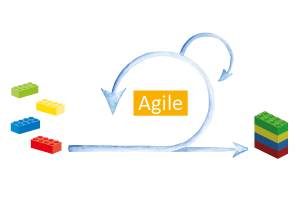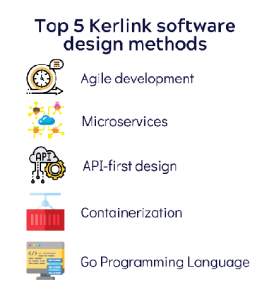The untold story: how Kerlink’s mastery of software-development best practices delivers critical benefits to customers. Part 1, Agile software development

By Stephane Dejean – Kerlink CMO
Five-part series outlines design & development process that produces IoT solutions ‘perfectly synchronized with the latest LoRaWAN® specifications’
Kerlink is widely recognized for its highly reliable connected hardware, including its well-established Wirma or Wirtrack product range, and for the quality, robustness and all-around performance of its Wirnet™ LoRaWAN® network-infrastructure solutions. Kerlink was the first provider of commercial, carrier-grade gateways and more recently extended its premier industrial-grade iSeries with new indoor and outdoor products.
As a full-service, turnkey Internet of Things solutions provider, the company also offers proven quality software development. With particular expertise in network management, orchestration solutions and value-added services such as geolocation and remote device management, Kerlink is rapidly growing awareness in the global market. The quality of its software is increasingly being recognized by demanding and experienced industrial users.
The selection, adoption and mastery of software-development best practices drive Kerlink’s business model and the richness of its service portfolio.
This enables Kerlink to offer solutions that are quick to deploy, easy to use and simple to maintain over time.
Not only are these IoT solutions perfectly synchronized with the latest LoRaWAN® specifications, they also leverage the flexible, efficient and open methods of software design and management to meet the scalability, security and usability requirements of Kerlink’s customers worldwide.
In this five-part series “Top 5 Kerlink Software Design & Development Methods that Benefit Kerlink’s Customers”, we will explain our top software design & development methods that benefit our customers and show that the company is at the forefront of software design, development methods and architectures.

The company’s adoption of these methods has allowed Kerlink to create hardware, software and services that are modular, flexible, secure and efficient to deploy. These software design methods inform Kerlink’s approach to the LoRaWAN® market and fuel the company’s success. The series also will conclude with major direct benefits to customers from those design methods.
The series:
- Method 1: Agile Development – March 19
- Method 2: Microservices – March 26
- Method 3: API-first Design – April 2
- Method 4: Containerization – April 9
- Method 5: Go Programming Language and Direct Benefits to Customers – April 16
Part 1: Agile software development
This method provides flexibility and adaptability in the development process, namely that fast, collaborative iteration during the process yields better software outcomes. This makes it possible to accelerate software development based on customer needs while avoiding the development “tunnel effect” in which a development team is figuratively and often literally separated from the customer and its requirements.
By flexibly sharing and managing the prioritizations of our portfolio development backlog, our development team adapts its design roadmap and delivery of features to quickly create the optimal solution.
All in all, agile software development allows continuous delivery by placing the customer at the center of software functional design. The objective of continuous delivery is to design, produce, test and distribute software quickly. This approach also helps to minimize the risks of software failures and to master architecture backward-and-forward compatibility by adopting a more incremental approach to the production process. Kerlink efficiently manages this simple and repeatable development process as a key element to optimize the cost-efficient production of software.
Hardware & software that ensures interoperability throughout the IoT chain
The choices made in Kerlink’s methods, architectures and support tools illustrate the company’s maturity and innovation in software design, deployment management and operations management in highly demanding customer environments. Kerlink believes in providing open, interoperable and reversible solutions matched to industry standards to provide exceptional customer experience and ensure the ongoing development of its solutions to support customers’ growing and evolving businesses.
Kerlink’s hardware and software expertise ensures interoperability of all functional components of the IoT chain, including embedded gateway software and server-side applications. Customers have come to rely on Kerlink’s expertise in the design of infrastructure and applications to support IoT network management and low-power wide-area (LPWA) private and public networks, in particular.
Kerlink’s choice of agile development, microservices architecture, API-first design, containerization and Go Programming Language has strengthened Kerlink’s IoT solution-development efforts. And we have shared these benefits with our valued customers by providing the ability to deploy a Kerlink solution in minutes, minimize risks throughout IoT solution-operations management, control IoT solution costs at a refined level and decrease deployment time.
By allowing continuous production releases, Kerlink enables its customers to benefit from rapid advancements in applications, management tools and platforms. These advancements improve the speed at which enterprises can design, deploy and support their IoT solutions. A software-design framework allows Kerlink to develop a set of automated operations tools to foster fast, reliable and flexible delivery of solutions for its customers.
Next week: Microservices


